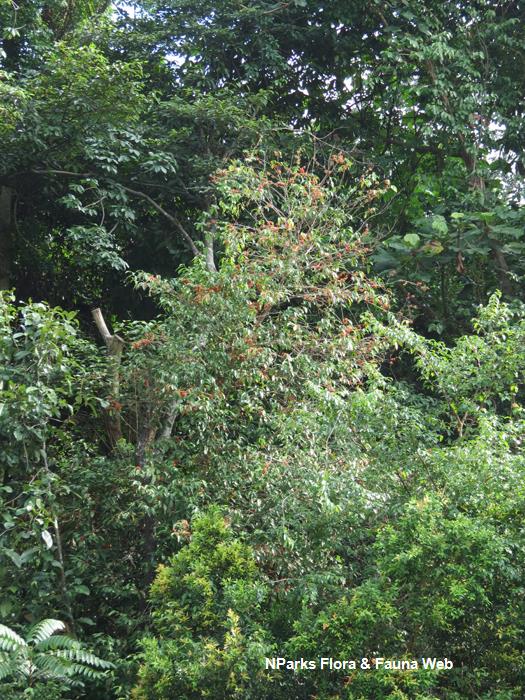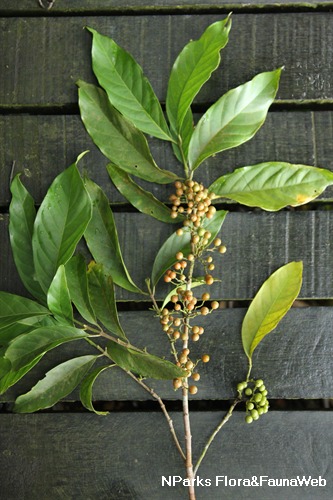
Back
Aidia densiflora (Wall.) Masam.
| Family Name: | Rubiaceae |
| Synonyms: | Aidia wallichiana (Wall.) Tirveng., Randia cochinchinensis (Lour.) Merr.;, Randia densiflora (Wall.) Benth. |
Name
Classifications and Characteristics
| Plant Division | Angiosperms (Flowering Seed Plants) (Dicotyledon) |
|---|---|
| Plant Growth Form | Tree (Medium (16m-30m)) |
| Lifespan (in Singapore) | Perennial |
| Mode of Nutrition | Autotrophic |
| Plant Shape | Irregular |
| Maximum Height | 20 m |
Biogeography
| Native Distribution | India, Myanmar, Thailand, Sumatra, Peninsular Malaysia, Singapore, Riau Archipelago, and Borneo |
|---|---|
| Native Habitat | Terrestrial |
| Preferred Climate Zone | Tropical, Sub-Tropical / Monsoonal |
| Local Conservation Status | Native to Singapore (Least Concern (LC)) |
Description and Ethnobotany
| Growth Form | It is a tree up to 20 m tall and has lenticellate greyish-brown bark. |
|---|---|
| Foliage | Its stalked leaves have papery blades that are usually narrowly elliptic, 12–18 by 4–7 cm, and have 6–12 pairs of veins. |
| Flowers | Its tubular flowers are 2–4 by 4–6 mm and covered with hair on the inner surface. |
| Fruit | Its fruits are round, 5 mm wide, and ripen from yellow to red to black. |
| Habitat | It grows in inland forests. It occurs locally in the vicinity of MacRitchie Reservoir, Bukit Timah Nature Reserve, Mandai Forest, in the vicinity of Upper Peirce Reservoir, Mount Faber, Changi, and Pulau Ubin (Chek Jawa). |
| Associated Fauna | Its flowers are insect-pollinated. Its fruits are eaten by birds. |
| Cultivation | It can be propagated by seed. |
| Etymology | Greek Aidia, everlasting; Latin densiflora, densely flowered, referring to the plant’s flowers which are arranged in clusters |
Landscaping Features
| Landscaping | It is suitable for planting in parks for its dense clusters of flowers and brightly coloured fruits. |
|---|---|
| Desirable Plant Features | Ornamental Flowers, Ornamental Fruits |
| Landscape Uses | Parks & Gardens, Riverine |
Fauna, Pollination and Dispersal
| Fauna Pollination Dispersal Associated Fauna | Bird-Attracting (Fruits) |
|---|---|
| Pollination Method(s) | Biotic (Fauna) |
| Seed or Spore Dispersal | Biotic (Fauna) |
Plant Care and Propagation
| Light Preference | Full Sun, Semi-Shade |
|---|---|
| Water Preference | Moderate Water |
| Plant Growth Rate | Moderate |
| Rootzone Tolerance | Moist Soils, Well-Drained Soils |
| Maintenance Requirements | Moderate |
| Propagation Method | Seed |
Foliar
| Foliage Retention | Evergreen |
|---|---|
| Mature Foliage Colour(s) | Green |
| Mature Foliage Texture(s) | Papery |
| Prominent Young Flush Colour(s) | Red |
| Foliar Modification | Stipule |
| Foliar Type | Simple / Unifoliate |
| Foliar Arrangement Along Stem | Opposite |
| Foliar Attachment to Stem | Petiolate |
| Foliar Shape(s) | Non-Palm Foliage (Elliptical) |
| Foliar Venation | Pinnate / Net |
| Foliar Margin | Entire |
Floral (Angiosperm)
| Flower & Plant Sexuality | Bisexual Flowers |
| Flower Colour(s) | Cream / Off-White, White |
|---|---|
| Flower Grouping | Cluster / Inflorescence |
| Flower Location | Axillary |
| Flower Symmetry | Radial |
| Individual Flower Shape | Tubular |
Fruit, Seed and Spore
| Mature Fruit Colour(s) | Black, Red |
|---|---|
| Fruit Classification | Simple Fruit |
| Fruit Type | Fleshy Fruit , Non-Accessory Fruit |
Image Repository
Others
| Master ID | 29205 |
|---|---|
| Species ID | 3514 |
| Flora Disclaimer | The information in this website has been compiled from reliable sources, such as reference works on medicinal plants. It is not a substitute for medical advice or treatment and NParks does not purport to provide any medical advice. Readers should always consult his/her physician before using or consuming a plant for medicinal purposes. |

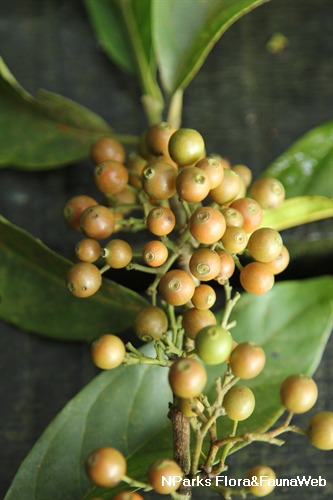
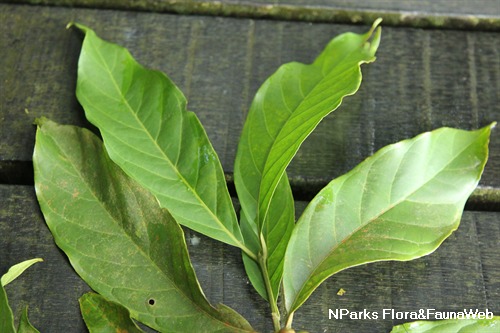
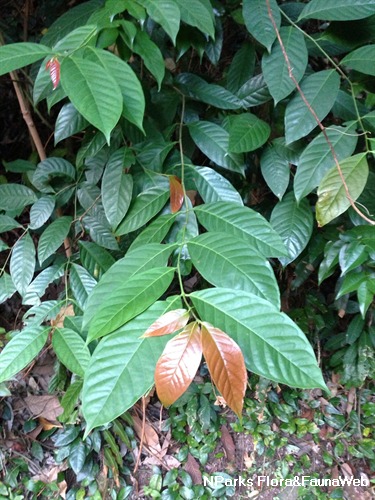
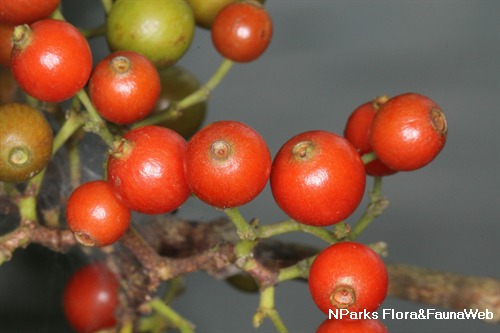
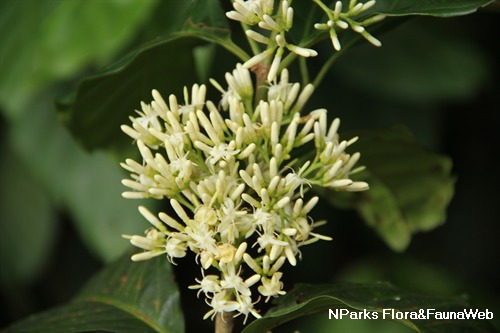
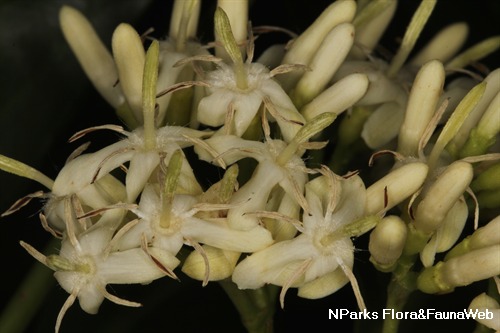
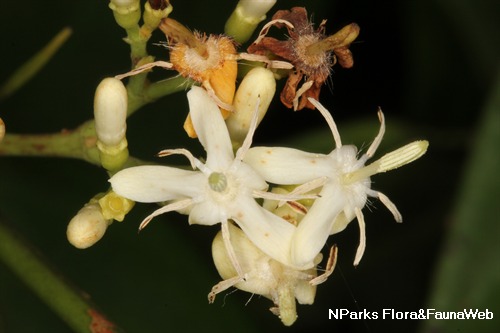
_lowres.jpg)
